Bjørn Lomborg is a well-known media personality who argues that there are more important priorities than reducing emissions to limit global warming. In a recent controversy centering on him, the Australian government (known for its contradictory position on climate change) offered the University of Western Australia (UWA) $4 million to make Lomborg professor – which UWA first accepted, but then after massive protest from its staff and students refused. The Australian government was quick to label it a “freedom of speech” issue that Lomborg should get a university position, and vowed to find another university that would host him. However, free speech doesn’t guarantee everyone a university position; there are also academic qualifications required.
A translation of this post in Spanish is available here.
Lomborg’s publication record
Let us thus start by looking at Lomborg’s track record in the scientific literature. This is where original research results, i.e. new findings, are published. One can look this up in the Thomson Reuters Web of Science, the main data base of the scientific literature. According to this Lomborg only has published 20 papers, of which 15 have never been cited by anyone (Fig. 1). The number of citations shows whether any other researchers in the world have found the results interesting enough to discuss them in their own papers (whether critically or otherwise). Only one of Lomborg’s papers has a reasonable number of citations: 42. This is on a problem of game theory, apparently resulting from his PhD thesis. On closer inspection, the other articles appear to be merely opinion pieces that made it into the Thomson Reuters data base by appearing in periodicals that are indexed there, including Forbes, Foreign Affairs or New Scientist.
Figure 1 Lomborg’s citation record in Web of Science, as viewed on 22 Aug 2015. The ten most-cited papers (out of 20) are listed. Click to enlarge.
That means that apart from one paper in 1996, Lomborg has never published anything in any field of science that was interesting or useful to other scientists, or even just worth the bother of contradicting in the scientific literature. PhD students at many universities are expected to publish two or three original research papers from their PhD, and without that, they are generally uncompetitive for a postdoc position.
For comparison I also show a snapshot of the publication record of an economist who really studies the economics of climate change: Gary Yohe (Fig. 2) – to give readers unfamiliar with bibliometric data an idea of what they look like for a regular scientist at professorial level. One number illustrates the point: Lomborg’s papers were cited once last year, Yohe’s 608 times.
Figure 2 Gary Yohe’s citation record in Web of Science, as viewed on 27 Aug 2015. The ten most-cited papers (out of 93) are listed. Click to enlarge.
Lomborg’s public comments on sea-level rise
I study sea-level rise, and I first noticed Lomborg’s sea-level comments in October 2008, when he published an opinion piece in the Guardian (via Project Syndicate) in which he wrote:
Since 1992, we have had satellites measuring the rise in global sea levels, and they have shown a stable increase of 3.2mm per year (1/8 of an inch) – spot on compared to the IPCC projection. Moreover, over the last two years, sea levels have not increased at all – actually, they show a slight drop. Should we not be told that this is much better than expected?
The first sentence is a debating trick frequently used by those wanting to downplay climate change: Lomborg compares the observed past rise with average projections for the future. However, in the projections sea level rise accelerates over time in response to global warming, so if the rate of rise is already now as high as models expect only in several decades, this is not “spot on”. When comparing like with like, i.e. the same time interval, it has been shown both in the journal Science and in the 4th IPCC report (published 2007) that the observed rate of rise greatly exceeded the projections available at the time of Lomborg’s writing. (In the 5th IPCC report the projections are about 60% higher than in the 4th and now do match past observations.)
Lomborg’s second sentence is also a classic debating trick of climate skeptics: confuse the public by cherry picking some short interlude which goes against the long-term trend (Fig. 3). This is always possible with noisy geophysical data.
Figure 3 The data behind Lomborg’s claim of falling sea level. Image courtesy of Greg Laden’s blog.
Ironically, the title of Lomborg’s article was “Let the data speak for itself”, but he did not show the data. (I did later in a response – for those wanting to read more on my exchange with Lomborg, see the Appendix below.)
Misrepresentation of IPCC reports
Lomborg has quite a history of misrepresenting what is written in IPCC reports. I noted this already in the Guardian exchange about the 4th IPCC report. Lomborg has likewise seriously misrepresented what IPCC says about sea level in its latest (5th) report. In a newspaper column for Project Syndicate, which got published in newspapers in many countries, he wrote:
For sea-level rise, the IPCC now includes modeling of glacier responses of 3-20 centimeters, leading to a higher total estimate of 40-62 cm by century’s end – much lower than the exaggerated and scary figure of 1-2 meters of sea-level rise that many environmental activists, and even some media outlets, bandy about.
Compare this to what the IPCC actually writes about sea level in its Summary for Policy Makers:
For RCP8.5, the rise by the year 2100 is 0.52 to 0.98 m.
(RCP8.5 is a scenario with unmitigated rise in greenhouse gas emissions.)
For the lowest emissions scenario RCP2.6 (which involves drastic emissions reductions starting in a few years and leading to zero global emissions by 2070) the best-estimate sea-level rise by the year 2100 given by IPCC is 44 cm. The emissions reductions needed to keep sea-level rise so moderate is the kind of scenario that Lomborg has devoted his career to prevent. Telling his readers that sea-level rise might just be 40 cm so they should not worry, without telling them that this low number would require massive mitigation efforts, is rather misleading.
The risk of a rise of 1-2 meters is dismissed by Lomborg as “exaggerated” and “bandied about” by “environmental activists and even some media outlets”. But surely Lomborg knows that a large part of the sea-level expert community considers this a serious risk, as documented in a number of peer-reviewed scientific publications? The thoroughly peer-reviewed US National Climate Assessment, published some months before Lomborg’s newspaper article, summarizes the state of science on future sea level in the following graph (Fig. 4).
Figure 4 Sea level rise according to the US National Climate Assessment (2014). The high end scenario of 6.6 feet equals 2 meters of rise between the years 2000 and 2100.
And an expert survey in which 90 sea-level experts (in contrast to Lomborg, all with a good track-record of research in this area) took part has come up with this distribution for the upper reaches of sea-level rise by 2100 (Fig. 5).
.
Figure 5 Distribution of the experts’ answers to the upper limit of the ‘likely’ range for the RCP8.5 scenario by the year 2100. Many experts consider a global sea-level rise between 1 and 2 meters quite possible in case of unmitigated greenhouse gas emissions.
Cynical misinformation offered to developing nations
Lomborg’s message to the newspaper readers has thus nothing to do with a fair portrayal of how much sea-level rise the scientific community expects. Rather it is a distortion and blatant attempt at downplaying future sea-level rise. Looking at Lomborg’s many other Project Syndicate columns shows that this is not a singular case but a regular pattern in his columns. This is all the more irresponsible given that Project Syndicate opinion pieces are widely reprinted by newspapers in developing nations, where reporting on the actual state of science is often poor and where people are most vulnerable to the impacts of climate change.
Earlier this year Lomborg travelled to Bangladesh to tell people there that “focusing on global warming instead of child nutrition is quite frankly almost immoral” (his standard false dichotomy). He further claimed:
The Dutch has shown us 200 years ago, you can handle sea level rise fairly, easily and cheaply, you can do the same thing here and you will do the same thing here.
It only takes a look at Google Earth to see how preposterous the comparison of Holland and Bangladesh is (Fig. 6). The latter coastline is vastly more difficult to defend against rising seas, and unlike Holland it is in the path of tropical cyclones.
Figure 6 Coastlines of Holland (top) and Bangladesh at similar scale. Holland expects to spend 1.2 to 1.6 billion Euro (1.4 to 1.8 billion US$) per year until 2050 to upgrade its already well-established coastal defences – but it has a straight, easy-to-defend coastline with only a small river delta region. Bangladesh in contrast is largely a river flood plain with major problems draining the monsoonal waters to the sea (closing the coast with a huge dike is not an option) combined with storm surges from tropical cyclones. [See more in Appendix 2.]
Lomborg’s cynical attitude towards the victims of sea-level rise could hardly be better illustrated by another Project Syndicate op-ed he wrote. There he dismisses even a catastrophic 20-foot sea-level rise (6 meters – a plausible outcome of unmitigated global warming in a few centuries) which would inundate about 16,000 square miles of coastline where more than 400 million people currently live:
That’s a lot of people, to be sure, but hardly all of mankind. In fact, it amounts to less than 6% of the world’s population – which is to say that 94% of the population would not be inundated.
What a cavalier way to dismiss the plight of 400 million people, coming from a rich Dane who in 2012 received a salary of US$ 775.000 in the US via conservative foundations!
Conclusion
To answer the question posed in the title: No, I do not think Lomborg is a scientist who just happens to have a different opinion from the majority. First of all, there is very little indication that he is actually working as a scientist, given his near-zero scientific track record since his PhD work according to Thomson Reuters Web of Science. Second, the arguments he presents to the wider public on sea-level rise can hardly be seen as made in good faith – rather, they appear to me carefully crafted (and admittedly rather eloquent) distortions, aimed to deceive his lay audience about the seriousness of the threat. In short, I would consider much of Lomborg’s writing propaganda.
Ever since his “Skeptical Environmentalist” book Lomborg has a simple, single message: don’t worry about reducing fossil emissions. Whether he denies or plays down the seriousness of global warming, sings the praises of adaptation, advocates to prioritize other problems or pushes geoengineering, the message is always the same: anything is better than phasing out fossil fuels.
As seen by the lack of citations, this message has zero credibility or impact in the scientific community. After all, scientists can judge the merits of the arguments. Unfortunately, Lomborg’s propaganda message is not only popular with fossil fuel interests, but continues to get ample space in the media.
Appendix
I did not want to burden the main article with too much detail, so here is how my exchange with Lomborg in the Guardian went on. In response to my complaint about the cherry-pick, Lomborg wrote:
Rahmstorf is correct to note that the levels are no longer dropping — which they were from 2006 to early 2008, the data available at the time of my article — but curiously seems disinclined to explore why the rise over the past four years (2005-2008) has been half the previous rise at 1.6mm/year. The inescapable point is that sea levels are not escalating out of hand – if anything, they are doing the exact opposite right now.
To start with, the satellite data were freely available online in near real-time from 1992 at the time of Lomborg’s earlier article, so the distinction between long-term trend and short-term noise should have been evident to him – it is inconceivable to me that Lomborg could have so little understanding of statistics that he does not understand the role of noise in the data, so his claim that sea-level rise is slowing can’t be out of ignorance but must have been a deliberate attempt to mislead his lay audience. And the short blip that Lomborg focused on was already over when his article appeared.
In my reply to this in the Guardian I wrote:
Why does Lomborg cite the trend since 2005? Last October, he cited that of the previous two years. Why now four years? Because the trend of the past two years (2007-2008) is now + 3.7 mm/year? It is even worse. The trend since the beginning of any year of the data series varies between 1.6 mm/year and 9.0 mm/year, depending on the start year chosen. Using 2005, Lomborg cherry-picked the by far lowest. He’s done this before, see for example his recent claim that the globe is cooling.
It is worth rereading these Lomborg articles from back in 2008/2009 to realise how even more ridiculous they are today, in the light of the data that have been gathered since. Of course sea-level rise has not slowed down.
Another example is how Lomborg tries to tell his readers that the globe is actually cooling:
Temperatures in this decade have not been worse than expected; in fact, they have not even been increasing. They have actually decreased by between 0.01 and 0.1C per decade.
That was another disingenuous cherry-pick; we now know that the hottest years on record are 2014, 2010 and 2005, with the hottest 12-month period being the past 12 months.
Appendix 2 by Jonathan Gilligan [Added on 4 September, from Comment Nr. 57)
About defending the Bangladeshi coast: See L. Auerbach et al., “Flood risk of natural and embanked landscapes on the Ganges-Brahmaputra tidal delta plain,” Nature Climate Change 5, 153 (2015) (Disclosure: I am a co-author), F.K. Khadim et al., “Integrated Water Resources Management (IWRM) Impacts in South West Coastal Zone of Bangladesh and Fact-Finding on Tidal River Management (TRM)” J. Water Resource & Protect. 5, 953 (2013) and Atiur Rahman’s book, “Beel Dakatia: The Environmental Consequences of a Development Disaster” (University Press, 1995)
In the 1950s through the 1970s, following recommendations of the UN Krug Commission report, Bangladesh built a large network of more than 100 embankments, or “polders,” based on the Dutch model, for flood control in the coastal areas.
The engineers designing and implementing this project did not account for the vast geological differences between the Bengal delta and the Netherlands. In Bangladesh, these polders prevented the natural flow of sediment onto the land and caused accelerated subsidence that contributed roughly 10 times more to relative sea level rise in many parts of the delta over the last 50 years than eustatic sea level rise.
Thus, far from protecting the coast, these Dutch-style embankments increased problems of flooding, waterlogging, and vulnerability to catastrophic flooding when storm surges from cyclone Aila in 2009 destroyed several embankments, destroying the homes of tens of thousands of people much as Katrina did in the lower 9th Ward of New Orleans. And severe tropical cyclones hit Bangladesh an average of once every three years.
Ironically, a number of Bengali engineers warned, in the 1920s and 30s, that building such embankments to control floods would actually make flood risks worse for the reasons I give above.
Additional recent work by J. Pethick and J. Orford, “Rapid rise in Effective Sea-Level in southwest Bangladesh: Its causes and contemporary rates” Global Planetary Change 111, 237 (2013) showed that the embankments along the tidal channels of Bangladesh also caused tidal amplification, which further exacerbated relative sea-level rise.
There is some hope for Bangladesh because if the land is not mismanaged (for instance, if sediment flow is not blocked by poorly designed systems of embankments and sluice gates), natural sediment deposition can cause significant aggradation of the land surface, enough to completely keep up with moderate sea-level rise. See, e.g., CA Wilson and SL Goodbred, “Building a large, tide-influenced delta on the Bengal margin: Linking process, morphology, and stratigraphy in the Ganges-Brahmaputra delta system,” Annu. Rev. Marine Sci. 7, 67 (2015). See also, the extensive literature on “Tidal River Management,” such as Khadim et al. (2013).
However, even the billion tons a year of sediment carried by the Ganges-Brahmaputra-Meghna river system is likely insufficient to keep pace with the kind of accelerated eustatic sea-level rise we expect in coming decades if the world continues to follow an RCP 8.5-like emissions trajectory.
Lomborg’s poorly informed recommendations to Bangladesh and his ignorance of the disastrous consequences of Bangladesh’s past attempt to emulate Holland exemplify Santayana’s warning that those who do not remember the past are doomed to repeat it.
Weblink
Danish biologist Kåre Fog has a good summary on his Lomborg Errors website of how Lomborg has shifted his position continuously over time, from denying global warming is a problem to wanting to fix it with drastic geoengineering measures. The website has extensive documentation of Lomborg’s errors. Fog concludes about Lomborg: “He does precisely what the fossil fuel industry would want a PR agent to do”.
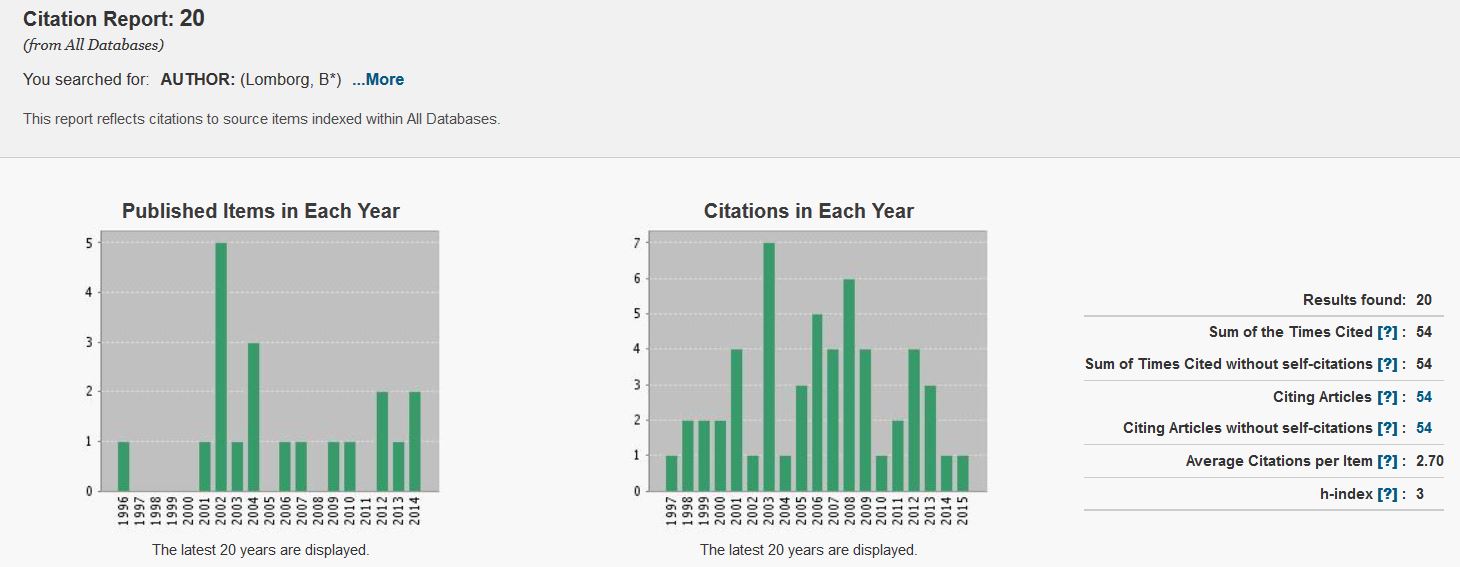
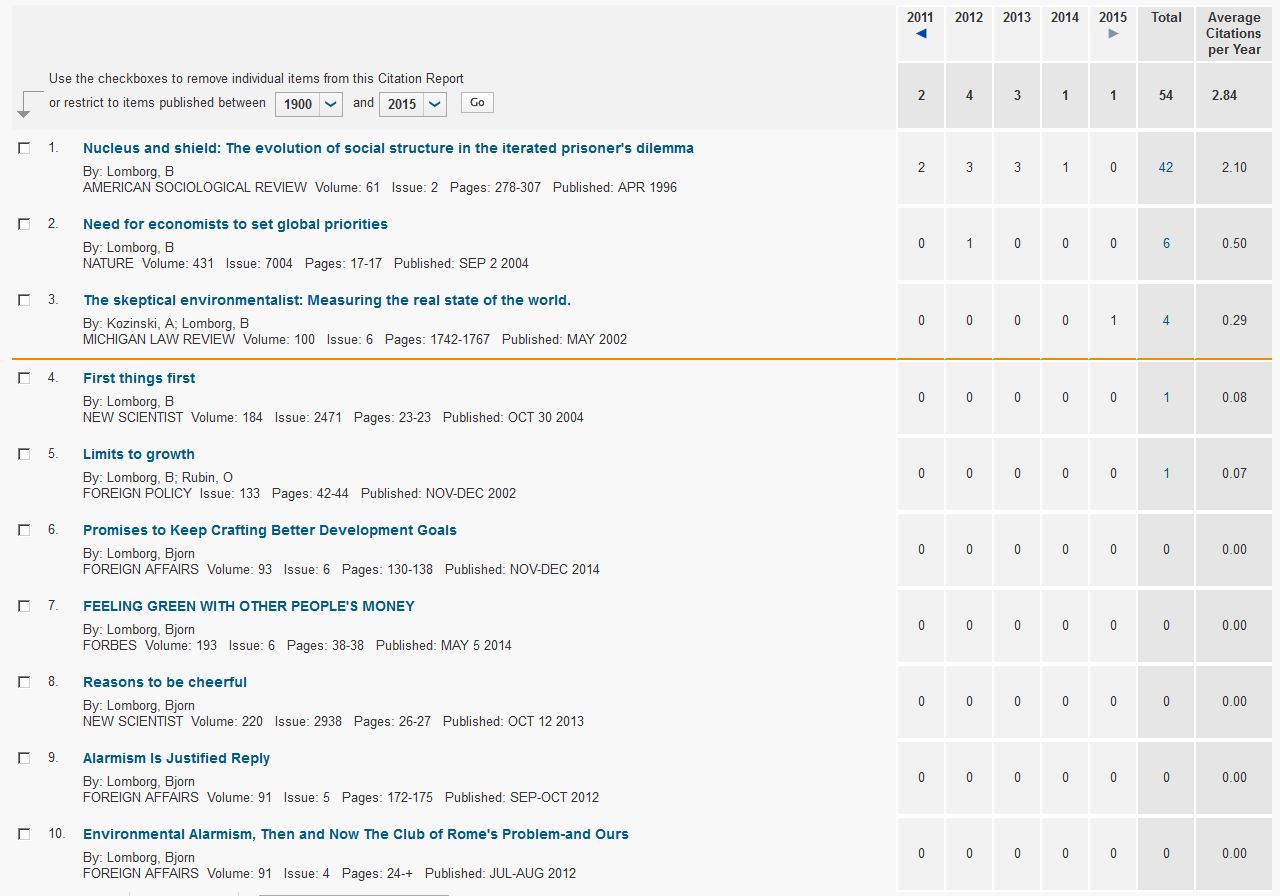
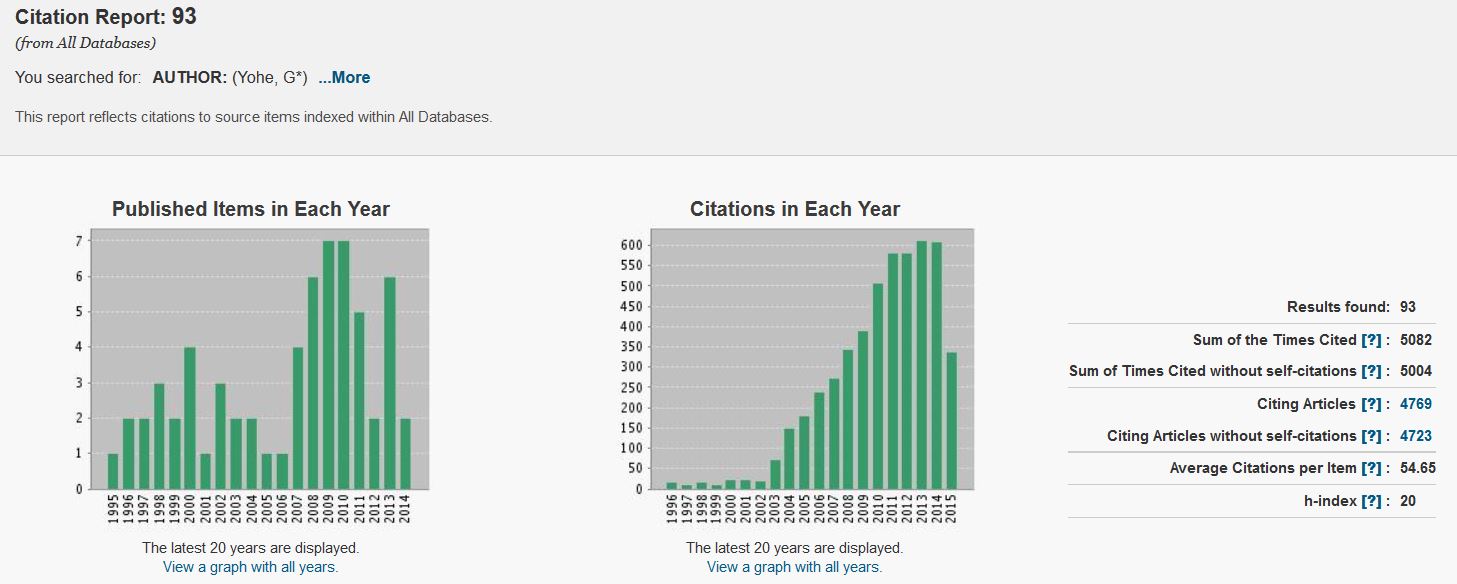
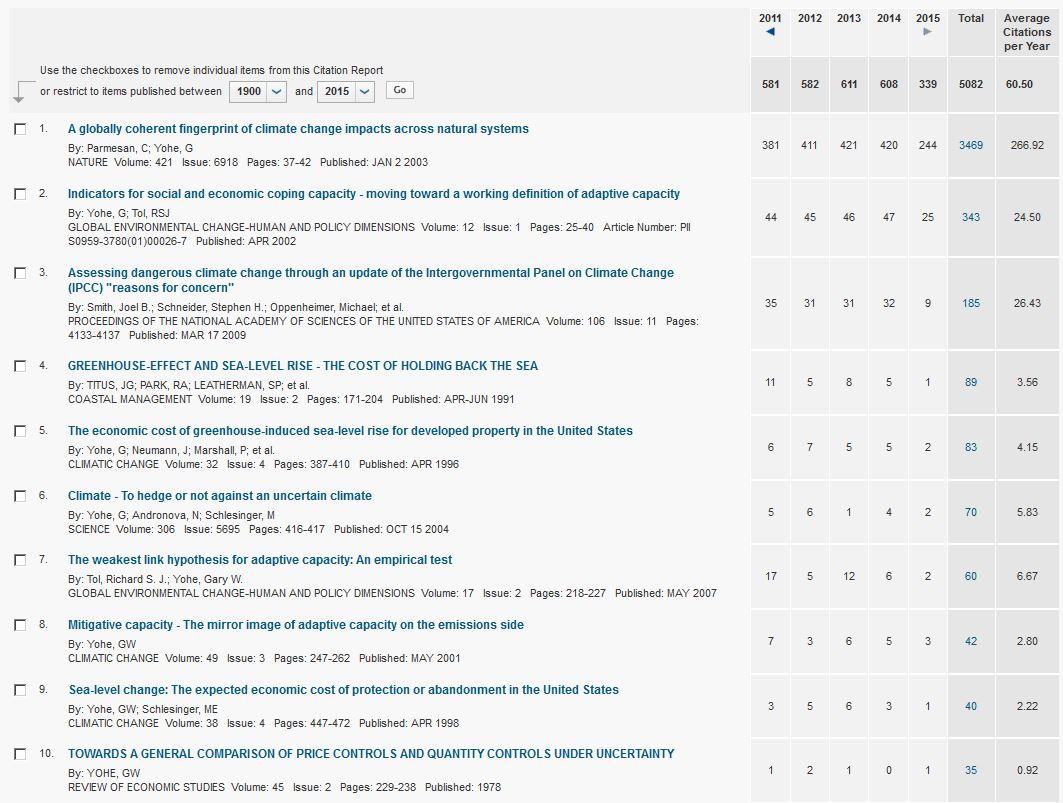
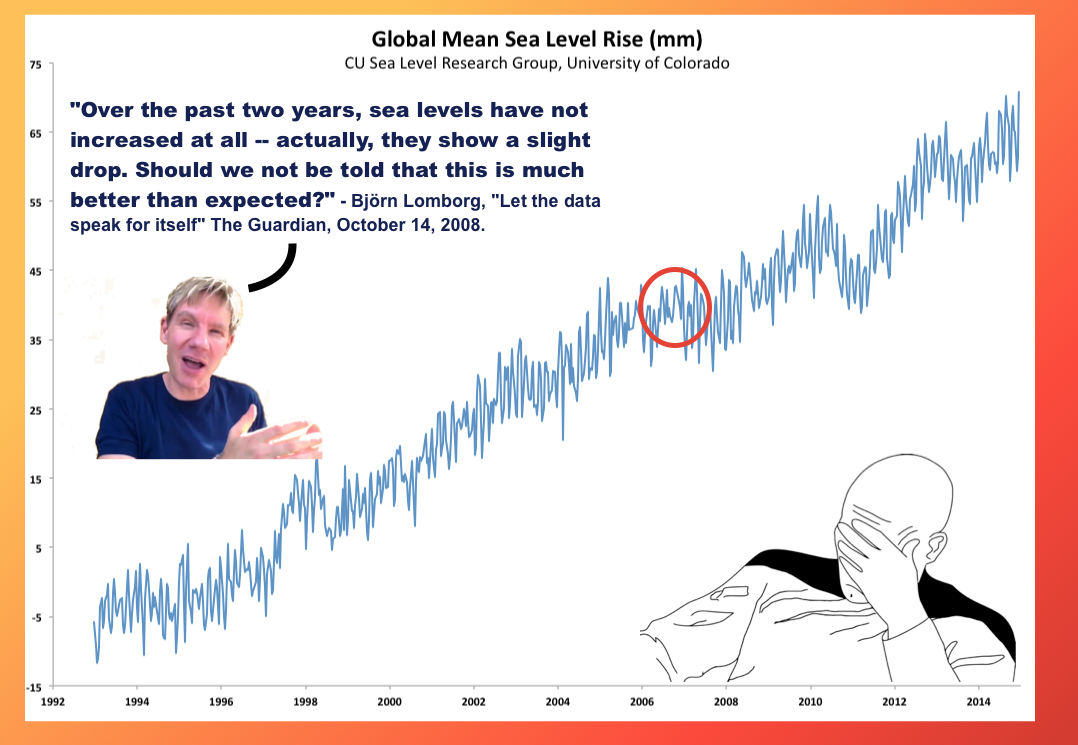
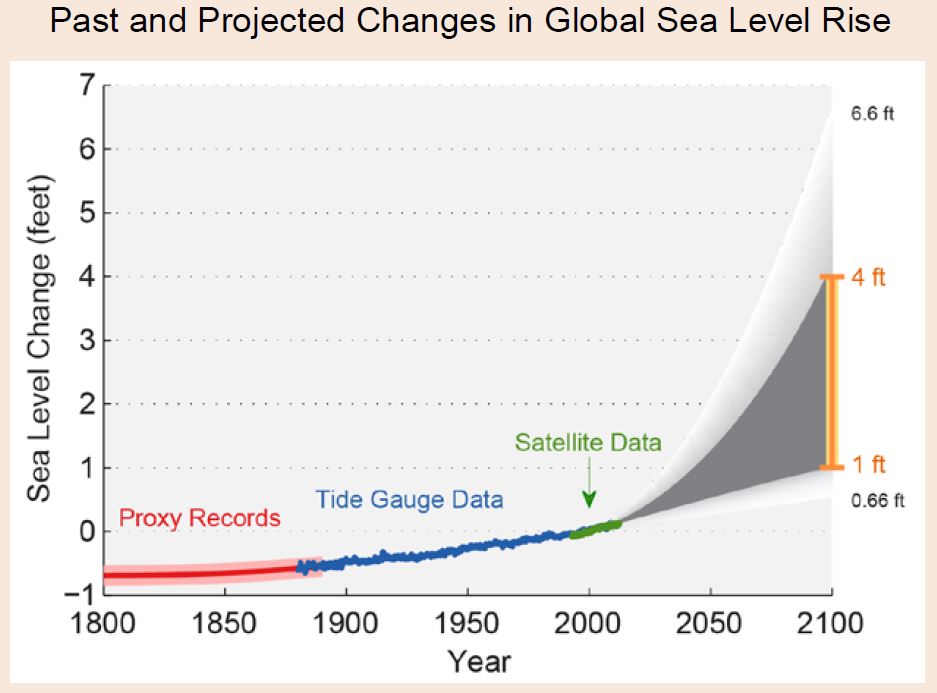
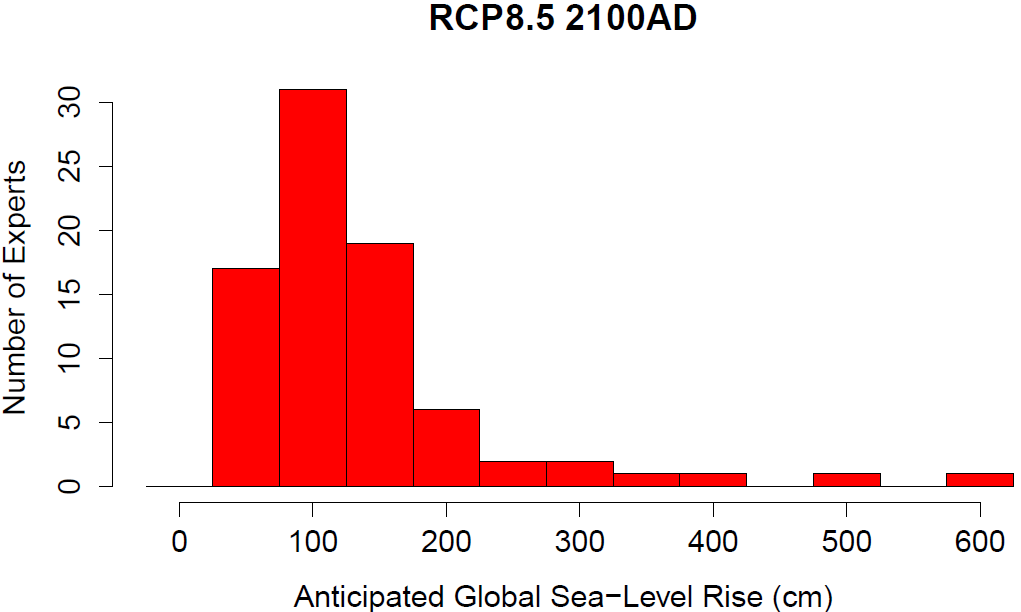
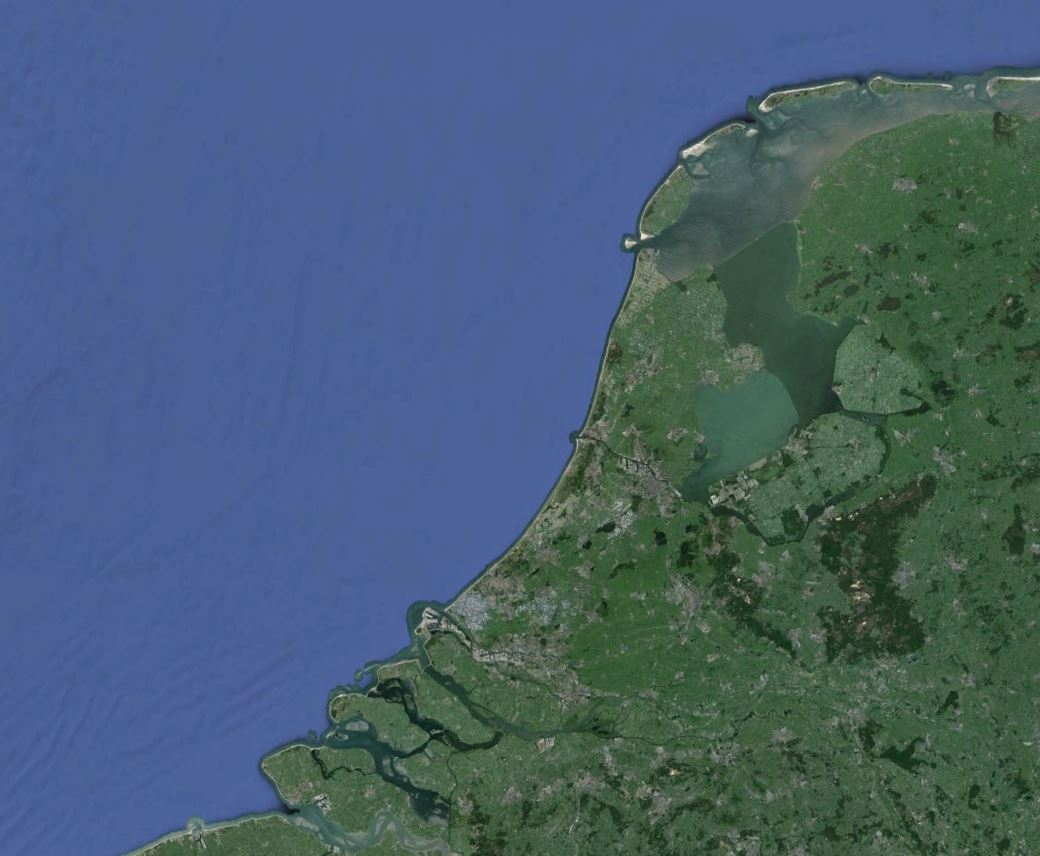
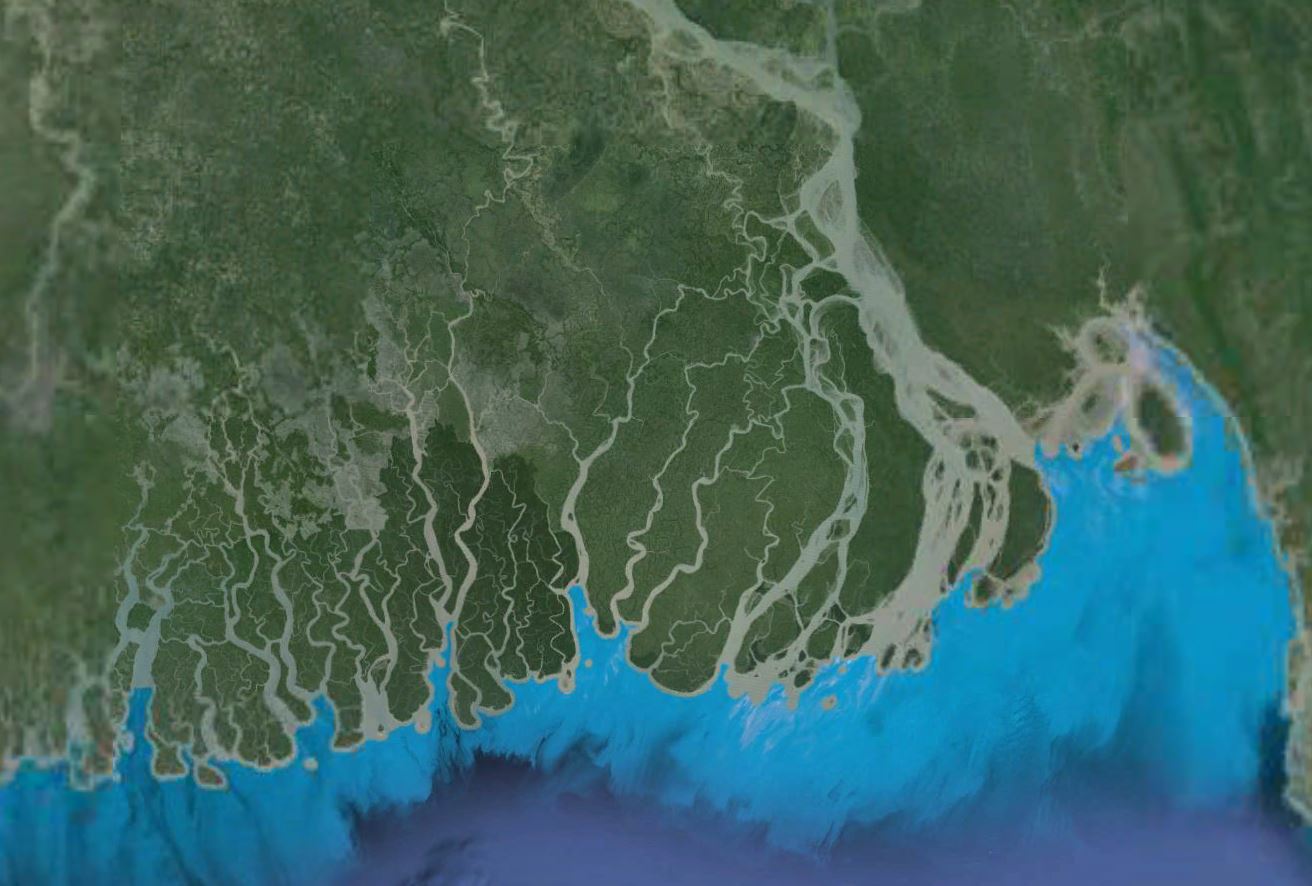
#92, Victor: A masterpiece of misdirection. On one hand, accurate accounting of the costs of BAU is important whether or not we can ‘ameliorate’ a particular harm, and if we can’t save Bangladesh then we’d better start thinking about where all the Bangladeshi people can go.
On the other, SLR in Bangladesh is only one of many, many harms likely to result from BAU. There are many reasons to mitigate emissions, and good reason (per AR 5) to believe we can still make a positive difference if we do so.
Steve,
Excellent. Then I will not have to dumb it down for you. I am curious, that if empirically, the rate of melt will decrease as the glacier recedes (all other factors being equal), what is your reasoning that it would increase? Is it real world data? Many of the glacier for which we have the longest record of study do not show this.
Thank you for this article. As has been pointed out TSE (The Skeptical Environmentalist) has been very popular. I offer my experience with it as a datapoint.
I came across TSE around 2002. I thought it was a very good/interesting book and it remains the only book I have ever bought from CUP. I even recommended it to other people to read. It seemed like it had a proper scientific basis, with all those hundreds of references, and the promise to correct any mistakes online. It was good to read something optimistic for a change, apparently giving a much more complete view than the news (which we know has a tendency to only report the bad stuff).
I have since read a great deal about energy and climate change, and quite quickly came to realise that TSE presented a very misleading view, but without being an expert it was very hard to work out exactly what was wrong in detail. It is only in the last year or so that I found proper refutation of it.
So it is perfectly possible for an interested person to read and believe TSE, but also to become better-informed, thus properly understanding the seriousness of climate change, and that Lomborg’s central thesis that other things are more important is simply wrong.
I have to say that I was annoyed to be taken in by it, but it is a tour-de-force – you have to admit that Lomborg is very good at what he does. It’s a great pity that he uses his abilities in such an unhelpful way.
Dan, some years ago Gavin told you to start citing sources that support your claims.
You don’t listen, do you?
And in that spirit, Hank, here is my citation for Dan as to why freshwater ice displaces less volume than it contributes after it melts in seawater:
http://phys.org/news/2005-08-ice-sea.html
@33 Steven B
1) Australia: the AU$4M from Abbott was definitely turned down at U of Western Australia, after faculty/students objected vociferously. Apparently, the same thing happened at Flinders U in South Australia.
04/26/15 Bjorn Lomborg’s Copenhagen Consensus Center – Real Charity Or “Foreign Conduit”? had relatively recent money flows, and an image of Copenhagen Consensus Center USA’s location in Lowell, MA, a PO box in a storefront. This got picked up by columnist in Sydney Morning Herald … and elicited unhappy, but ill-informed comments from Lomborg. I actually visited this location last week in search of CCC, but indeed there was nothing but a PO box.
2) Bjørn Lomborg Brings Profit-Protective Policies Back To Denmark showed that the climate issue is only one part of a general Lomborg problem.
3) However, it appears that CC may well not make it back to Copenhagen.
08/04/15 Danish funds for climate sceptic Lomborg blocked tells us:
“The government’s plans to provide funding for the Climate Consensus, an organization founded by Danish statistician and climate debater Bjørn Lomborg, has been blocked by support party the Conservatives.
The Conservatives announced on Monday that they would vote against include the Venstre government’s proposal to fund Lomborg in this year’s budget. …
Denmark’s minister for the environment, Lars Christian Lilleholt, said last month that he planned to fund the organization in order to add additional voices to the climate change debate, which he said has become too “one-sided” and “elitist”.
But on Monday, Lilleholt backpedalled from his plans and said it was still “too early” to know if Lomborg’s group would be included in the annual budget.”
“Lomborg’s central thesis that other things are more important is simply wrong.”
Yes. What could be more important than convincing the world to spend trillions to forestall a coming disaster while at the same time reminding everyone that it’s already too late and we are doomed?
[Response: You seem to not realise that 2 °C warming is better than 3 °C, and 3 °C is better than 4 °C, and so on. It is not a question of being either doomed or not, it is a question of how bad it will get, and it is entirely sensible to try and avoid the worst. -stefan]
As one of the two people who knew Richard Feynman (of those who regularly comment here on Real Climate), I state it wasn’t the number of his publications but rather the content. The work, taken as a whole, was a substantial portion of establishing what is called the Standard Model of Particle Physics. What isn’t so immediately obvious, perhaps, is the profound influence he had on all he met; the most famous being Murray Gel-Mann, who did quarks and gluons.
re: 38 and 53
Regarding publication by Cambridge University Press:
CUP also published Murry Salby’s Physics of the Atmosphere and Climate, of which my review said:
Gets 1 for ~20 pages of anti-science nonsense, rest of the book likely would be a 4.
That was a summary of a detailed analysis done elsewhere, not yet published.
There is other reason to worry about review at CUP. I asked a few of the blurb writers quoted*.
At least one was given only a few days, so focused on the atmospheric physics, and another made critical comments similar to those of mine, assuming they would get fixed, but they weren’t.
*One never knows with blurbs, as a few lines may be quoted from pages of commentary.
First, I am not making predictions – the dynamics of an event like this is not something anyone can model. Just pointing out that something like this could happen.
Richard Caldwell: your presumptions about isostatic rebound are based on slow reduction in size of a glacier. If a really big chunk of ice cracked apart, that would be different dynamics.
Dan H: a 4km thick piece of ice would not leave the grounding elevation unchanged if it went away. Ice weighs approximately 1 tonne per cubic metre (a little less than the same volume of water). A 4km thick piece of ice with a surface area of a square km weighs about 4,000,000 tonnes. Water 2km deep, replacing the ice, would weigh half that. Do you think releasing a weight of 2Mtonnes would have zero effect on the level of the surface below?
Weird. In my browser (Firefox 38.0.5 on Fedora 20 Linux), the second of the three pages of comments on this post shows comments with notations in Finnish, for example:
Barton Paul Levenson kirjoitti:
5 Syy 2015 8:57 AM
The first and third pages of comments show the word “says”, and the month in English.
Does anyone else see this??
“Yes. What could be more important than convincing the world to spend trillions to forestall a coming disaster while at the same time reminding everyone that it’s already too late and we are doomed?”
– See more at: https://www.realclimate.org/index.php/archives/2015/08/bjorn-lomborg-just-a-scientist-with-a-different-opinion/comment-page-3/#comment-635664
That would be these guys:
http://www.amazon.com/Unstoppable-Global-Warming-Updated-Expanded/dp/0742551245
FYI ‘Fernando’ above:
https://www.realclimate.org/?comments_popup=18727#comment-635518
is Fernando Leanme, a tedious self-styled gadfly/social critic/contrarian who regularly posts bosh on various climate forums (e.g. Rabbett Run) and just as regularly gets swatted down for it.
His high opinion of Lomborg is not at all surprising.
Hank @ 82
Really?!?! A 120km x 30km glacier would raise global sea levels by 6m? I didn’t realise those glaciers went all the way to the mantle
Thank you for this post and responses, for instance:
…several things like this Australia story and Lomborg’s interview in Bangladesh motivated me to comment on his sea-level claims as they are in my field of expertise, but because I am very busy it took me some months to get round to it. Unlike Lomborg, writing public commentary is not a job I have much time for or get paid for. -stefan [@99]
I spent too much time trying to figure out what Lomborg was saying and I couldn’t make sense of it. There is no sense to be made of a false dichotomy, for instance–to borrow a note from this post.
Lomborg has nothing to say about climate; all he produces is serial distraction, I think.
My sentiments exactly:
I am always impressed by the deep and abiding concern for the poor exhibited by the do-nothingists as soon as the subject of climate change is mentioned. – Ray Ladbury @19
Or: …do-nothingists from northern temperate latitudes…
A contribution made by the release of the encyclical letter, “Laudate Si” (and by the letter itself), is that it refused to make separate matters of climate change and poverty. This will also be an important theme in Paris–and a key to agreement there–I think.
“Dealing with poverty is not elimination of the poor. It’s rather finding a way to invest in the human capital and potential of the poor…[and] the resourcefulness of the poor.” –Peter K.A. Turkeson (Ghana) at the presentation of the letter (153:23):
https://www.youtube.com/watch?v=bYibHoWrKXo
Phillip,
True.
My sole contention was that the ice that is grounded below sea level, will result in less volume than the resulting melt water. The ice above sea level will contribute additional volume, since it displaces no water at all.
Replacing the ice with an equal volume of sea water, will result in greater weight pressing down onto the surface. In your scenario, there is an additional 2km of ice above sea level, which must be accounted for. This ice with raise sea level (if it were to all melt) by both your methods outlined.
Keith Woolard, your arithmetic is wrong. Please check. This may help:
https://www.google.com/search?q=area+of+greenland
What’s Greenland got to do with it Hank Rooberts? Your quote and the link say that the 120x30km glacier in East Antarctica has enough water to raise global sea levels by 6m. Check your arithmetic
#98 thanks for the reply Stefan. I understand it’s not about you or any one scientist. I hope, but do not know, how well you all network on this kind of an issue. Or if any consider that serious.
There is a game book the naysayers all use in every nation. I hope the academics and scientists are not having reinvent the wheel in each country when these tricks are being tried on. That would be a big waste of time for all.
The climate denier politicians in Australia do not think this up all by themselves you know. They aren’t that smart. That’s all. Again thanks. (and there’s nothing theoretical about this matter – it isn’t a theory!)
For Woollard — you’re measuring the size of the stopper, instead of the size of the ice held behind the stopper.
Read the science, not just the news summary. They leave out what’s presumed obvious to the reader, and you’ve made the point that they should have spelled it out for you that removing the plug destabilizes the ice cap behind it.
Hey, who knew, eh?
From the source quoted in the news story, more:
http://www.antarctica.gov.au/news/2015/warm-ocean-water-melts-largest-glacier-in-east-antarctica
How big is the East Antarctic ice cap?
P.S., Woollard’s math question does point out an ambiguity in the English language that science writers ought to be very careful to spell out.
The word “contains” can be read, or misread. Everyone is clever about this.
Does the cork contain the wine?
The bottle contains the wine
The cork keeps the wine contained in the bottle.
So also for the glaciers at the edges of the icecaps, e.g.:
http://www.polartrec.com/expeditions/totten-glacier-system-in-east-antarctica
So Hank, even if we use your meaning of contain…. that somehow this 30km wide blockage is holding back 2.1E15 tonnes of ice… then you are still saying that the average thickness is 4km over that entire half a million square kms, is that correct? 6m of sea level is 361,132,000 km2 by 0.006= 2.1 million cubic kms. I know the paper didn’t say it was going to melt, but this sort of attention grabbing headlines are what makes people distrust science. I will be sure to come back in 30,000 years and check how the melt is going given that the vast majority of the glaciers contents are permanently below zero degrees.
“…given that the vast majority of the glaciers contents are permanently below zero degrees.”
– See more at: https://www.realclimate.org/index.php/archives/2015/08/bjorn-lomborg-just-a-scientist-with-a-different-opinion/comment-page-3/#comment-635939
‘Permanently?’ Clearly not. Maybe not even on millennial time scales, going forward.
Keith Woolard,
The EAIS has a depth of 1-3 km. If the average is 2 km, that would give us about 1.1 million cubic km over drainage basin of Totten. That certainly puts us in the ballpark of the estimated sea-level rise.
You know, Keith, you can look this stuff up yourself. But I suppose if you don’t really want to know the answers, that probably isn’t part of your agenda.
>Woollard … I know the paper didn’t say it was going to melt
Science papers don’t try to say everything about everything in every paper.
The ice caps have melted in the past.
We’re pushing warming — faster than nature ever did — into the same range.
Greenland’s likely committed to melt. Antarctica, we still get to choose.
Kids, think this through, don’t rely on people on blogs to ask smart questions for you. Look up “ignoramus, ignorabimus” and the alternative to that.
Op. cit.:
Through a Crevasse Darkly: An Update on the Future of the Antarctic Ice Sheet — Richard Alley
And more:
http://advances.sciencemag.org/content/1/8/e1500589.full
> Woollard … “even if … somehow ….”
Look, W., I try to avoid recreational typing. Just asking “Why?” over and over like a kid is only an invitation to wasting my time helping you with stuff you already could have found out by looking for “how” yourself.
http://www.nature.com/nature/journal/v484/n7395/full/nature10968.html
Kids, make the effort, don’t fall for pretend-ignorance. You have to look this stuff up for yourself. Ask a Reference Desk librarian for help.
Stefan fyi – this is far from over.
Adelaide Flinders University staff and students keep fighting Bjørn Lomborg centre
An open letter signed by 6662 students, teachers and alumni rejects any plan for the university to host a Lomborg-run research centre
http://www.theguardian.com/world/2015/sep/17/flinders-university-staff-and-students-keep-fighting-bjrn-lomborg-centre
Yes Ray, I could have worked it out myself. In fact I did and came to the same conclusion as you, that Hank’s link to the phys.org article about the press release by the Australian scientists was shown to be a gross exaggeration. Any schoolkid could have seen through it
Hank,
“We’re pushing warming — faster than nature ever did — into the same range.”
How do you know this? Do you have a specific reference?
From paleoclimatology data, it is far from obvious.
https://en.wikipedia.org/wiki/Paleoclimatology
Keith,
Yes, contain is a poor choice of wording. The ice is not contained in the same way that a dam contains the water behind it, such that a breach will send the water downstream, flooding the valley. Rather, the ice behind will force the end of the glacier to move forward. Hence, it is appropriately termed a terminus, as it is just that, an end point. It will advance or recede, depending on many factors. Claims that the glacier will raise sea levels any time soon, seem quite premature.
Romain: look beyond Wikipedia
http://oceanservice.noaa.gov/education/pd/climate/factsheets/iscurrent.pdf
Or look again at Wikipedia:
The rate of change comparison you say is “far from obvious” may be so for you because you did not look at the scale at the bottom of the image on that Wikipedia page. Look again carefully at the numbers across the bottom below the picture:
https://upload.wikimedia.org/wikipedia/commons/thumb/f/f5/All_palaeotemps.png/600px-All_palaeotemps.png
https://www.jsg.utexas.edu/news/2015/03/east-antarctica-melting-could-be-explained-by-oceanic-gateways/
http://www.nature.com/ngeo/journal/v8/n4/abs/ngeo2388.html
As the guy passing the 3rd floor on his way down supposedly said, “the ground is just an end point, and whether it will advance or recede — oh, wait …”
Perhaps a miracle will happen.
This pub estimated 3.5m eustatic sea-level rise from area drained through Totten. i don’t know if there are other estimates that are larger, but either way, the gist of the article still holds: areas that were thought to be stable are showing ice loss.
http://www.nature.com/ngeo/journal/v8/n4/full/ngeo2388.html
>That means that apart from one paper in 1996, Lomborg has never published anything in any field of science that was interesting or useful to other scientists, or even just worth the bother of contradicting in the scientific literature.
This could be said about the vast majority of scientists.
When outlet glaciers for ice sheets (eg Greenland) retreat, they are flowing faster and releasing more water.
Hank,
If … it continues, it could, potentially … which may, eventually … so … could have global consequences. That is upon which you are basing your conclusions?
#137–Dan, do you really think that anyone here will be impressed/persuaded/provoked by such a transparent rhetorical device?
Inquiring minds want to know…
Kevin,
No. That is why I pointed out the wishy washy claims in Hank’s post. Bit to mention his poor analogy of glacial advance to a falling object. Newton would be appalled.
Dan H. takes the language scientists use — probability — and spins it as indicating doubt and no need to take action.
He’s aiming at the new reader and the young reader who don’t understand either science or physics, who fall for the doubt-and-delay rhetoric.
Kids, talk to a reference librarian about this stuff.
Find someone you can trust.
Re- Comment by Dan H. — 18 Sep 2015 @ 11:33 AM, ~#137
When I tell you that allowing your children to play with a loaded gun could “potentially” result in an injury, or that a dead tree in your yard could “eventually” fall on your house, these are not “wishy washy” claims. They are expressions of probability and risk. When expressed by your neighbor the claims may or may not be worth paying attention to, but made by experts in a field, they should be taken very seriously. This is especially true when considering statements in an abstract because you can read the paper to see the evidence.
Steve
Dan, let me clarify for you. Hank’s comment is, IMO, not so much an analogy as a parable. He’s not saying that a falling body is specifically like an advancing glacier. (Especially true since the subject was receding glaciers… but I digress.)
HIs point, as I read it at least, is that certain processes are sufficiently well-understood that, for practical purposes, we can assign to them a pretty high probability of continuation to completion even though strict scientific justification for such isn’t yet in.
Falling objects will continue to fall until they reach bottom.
Wine will continue to flow from a tipped bottle, if the stopper is removed, until the liquid reaches the lowest level of the neck.
And if Totten goes, the result will almost certainly be felt far, far ‘upstream’ in the form of increased flow rates–and therefore also across the world ocean, in the form of additional SLR.
The last case is the most complicated, no doubt. There’s temperature, and therefore melt, there’s rates of deformation, there’s bottom topography, and there’s the epistemology of the limits of the data and the limits to which our modeling accounts for all those factors. So, yes, there’s uncertainty. But the bottom line is that it’s damn sure that that ice isn’t just going to sit there, and it’s damn sure that we won’t like the ‘potential’ consequences. It’s pretending that ‘maybe’ somehow nothing will happen is what is truly ‘wishy washy.’
And actually, stepping back–if you think about it, all of three of the processes considered above are indeed, in a manner of speaking, ‘falling’–since all of them are gravity-powered. That feels like an insight to me, but I suspect it would have been immediately obvious to Newton.
Folks, nobody is going to stop Dan H. from his misrepresentations. He comes here to polish his presentations, then posts them elsewhere.
The pseudonym could cover a whole team at work distributing this stuff under the same name, or one very active guy; ‘oogle is fascinating. This kind of stuff:
https://skeptoid.com/blog/2013/06/05/anthropogenic-global-warming-and-cfcs/
Same guy? Who can tell? Plenty more out there. He drops into conversations, posts stuff that — credit where due — sounds more and more reasonable over the years, though the distortions are fundamentally the same. After people catch on he goes elsewhere. He comes back here to polish his language and copy wording that makes him sound like a scientist.
Kevin,
Both Hank and yourself are comparing different physical properties. Gravity does not change, hence the object will continue to fall or the wine will continue to flow. A glacier has several factors affecting its advance and retreat, and predominating forces change over time. Hence, glaciers have advanced and retreated multiple times throughout history. Once the wine is out, it is gone. I have no doubt that the Trotten glacier will melt sometime in the future. It may be 30 thousand or million years. The terminus of the glacier has little to do with the melt rate. Just like the current sea level has nothing to do with how much its level will change in the future.
You take of probability in science, but neglect to mention hos the probability of Trotten melting is so remote, as to say it will not happen in a reasonable timeframe. Just like Yellowstone will not erupt in a reasonable timeframe. Eventually, it probable will ( not certain though). The uncertainties Hank mentioned are extremely remote. However, he is trying to portray them as normal scientific uncertainties that have a much higher probability of occurring. Do you have any data or projection that even 1% of this glacier will melt in the coming decade or so? Can you even point to data showing how long it has taken this glacier to accumulate or dispense 1% of its mass in the past? Yes, there is uncertainy, but it best be put in the proper perspective.
> gravity-powered
Exactly. The ice is always moving downhill:
There are many misconceptions about geological concepts. There is a list here, developed by Kent Kirby of the University of Minnesota. This post is to debunk a few of those misconceptions, specifically dealing with how glaciers work.
Hank,
Perhaps you should read your own link’ “the glacier is still flowing down hill and carrying debris as always. But, because there is now an increase in melting over accumulation, the toe is melting back uphill, and the glacier does not make it as far as it used to.”
Dan H. can’t cite sources for what he claims.
Try pasting his claims into Google (“reverse citation — post what you believe then google for support” — not a valid way to support claims, deprecated by teachers, but students keep trying it ’cause you can find almost anything with Google somewhere).
Try it. That doesn’t work for Dan’s claims here.
Why not?
You don’t have to dig through science journals for this information now.
One of many:
http://www.theatlantic.com/international/archive/2015/03/the-new-west-antarctica-yep-its-east-antarctica/388018/
“It can’t happen, so it won’t happen” isn’t working, Dan H.
Try citing sources for what you believe — or challenging your own beliefs by trying to find support for them.
We all wish you were right.
“… because there is now an increase in melting over accumulation …”
fails to support Dan’s claim. He’s quoted half a sentence from a description of pictures of terminal moraines for two mountain glaciers, left since the peak of the last ice age.
Yes, contrary to Dan H’s claim, and supported by the science quoted: change at the terminus of the glaciers does affect the melt rate of the Antarctic and Greenland ice. Yes, sea level does affect the melt rate — of the Antarctic and Greenland glaciers.
http://www.nature.com/ngeo/journal/v8/n4/extref/ngeo2388-s1.pdf
“You take of probability in science, but neglect to mention hos the probability of Trotten melting is so remote, as to say it will not happen in a reasonable timeframe.”
– See more at: https://www.realclimate.org/index.php/archives/2015/08/bjorn-lomborg-just-a-scientist-with-a-different-opinion/comment-page-3/#comments
This is hilarious.
First, it’s hilarious because it’s a classic case of ‘moving goalposts.’ We’ve been talking about the consequences IF Totten–and by the way, Dan, you’ll have more luck Googling ‘Totten’ than ‘Trotten’, I think–melts. But now Dan assures us it’s really OK, because the ‘probability of Trotten melting is so remote.’ Gosh, I feel so much better now! But wait–
Second, it’s hilarious because it’s so self-assuredly wrong. “Trotten”, whatever the hell it is, may not be likely to melt, but the probability of *Totten* melting is 100%, because it’s observed to be happening right now:
http://www.ocean-sci.net/10/267/2014/os-10-267-2014.pdf
And that was before the larger numbers found in the more recent research already linked on this thread.
That’s the whole point about Totten: it’s showing rapid mass loss rates by East Antarctic standards, and its upstream effects may be expected to be large.
Dan H = Troll
don’t feed the trolls.